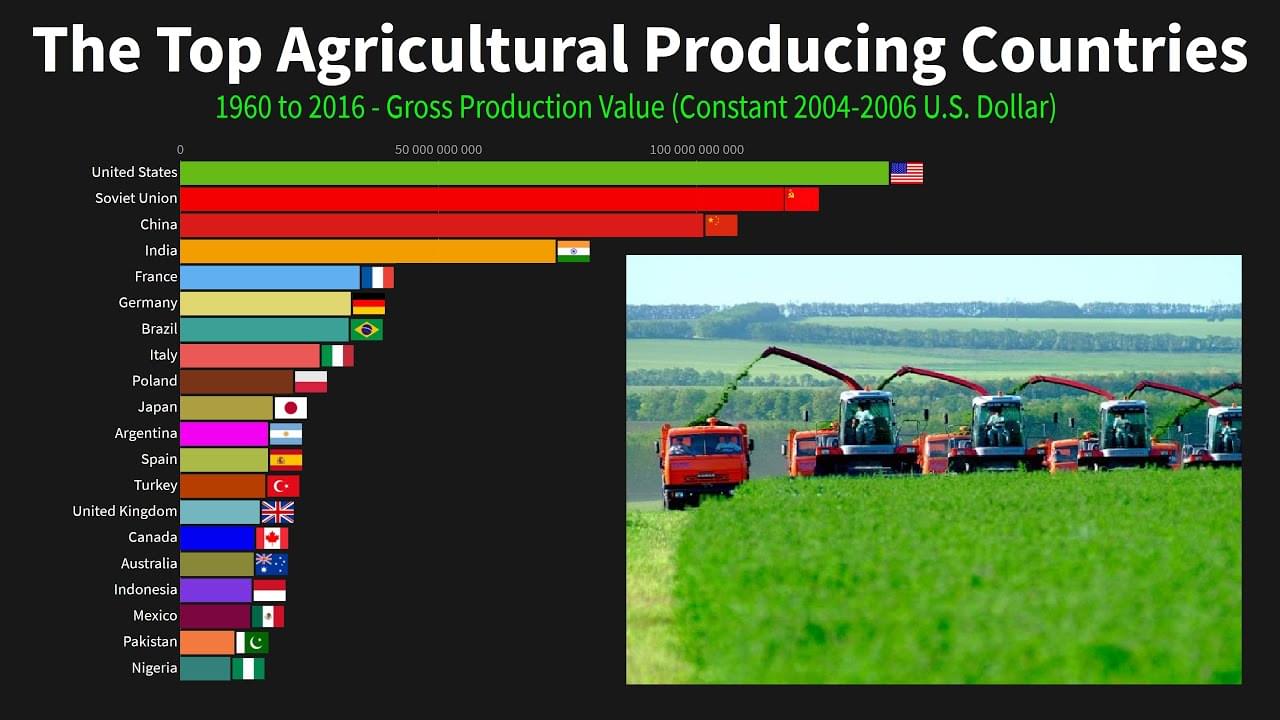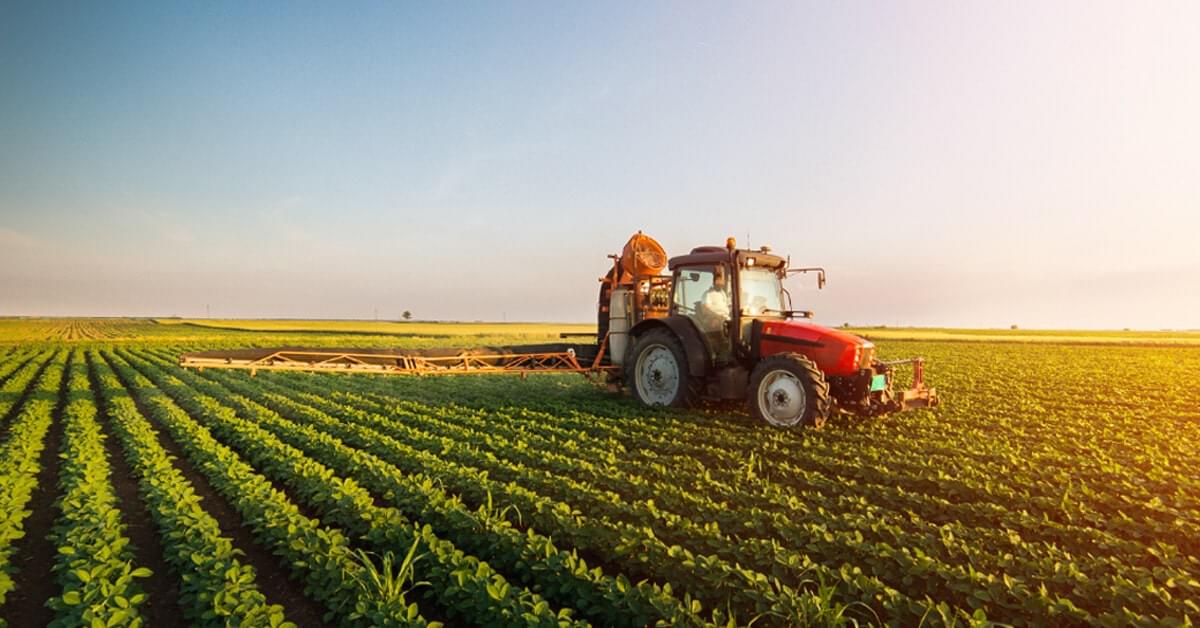A major component of the global economy, especially in emerging nations, is agriculture. Agriculture serves as the primary source of food, income, employment, and other basic requirements around the world. The Food and Agricultural Organization (FAO) estimates that 67% of the world’s population works in agriculture. It represented 39.4% of the GDP, while 43% of all exports were made up of agricultural products. Stay tuned as we provide all the information on the top agricultural producing nations in the globe on this site.
Many developing agricultural producing countries depend on agriculture imports, and food certainty, and many emerging countries will not refine without a significant increase in local production. It is evident that for the last few years, the role of agriculture in world economic development has gone through important progress.
Now, let’s talk about the types of agricultural production
Sponsered6
26% of the world’s land is utilized for livestock grazing, with approximately 11% of that area dedicated to agriculture. Food, fuel, fiber, and raw materials production are the key agricultural product categories. Check out the complete list of the top 10 agriculturally producing nations below.
Top Agricultural Producing Countries in World
The top ten agricultural nations in the world producing the best food products are listed below. Look at the nations that produce agriculture.
China
Sponsered6
China feeds 22% of the world’s population on only 7% of the arable land. China struggled to feed its sizable population in the 20th century. China then saw significant self-sufficiency and prosperity as a result of modernizing farming policy and technologies. China’s main economic planning authority warns that keeping this promise would be challenging.
Agriculture in China
- China’s land is highly employed for agriculture.
- Vegetables are planted in China, on the roads, and on many building walls.
- In 1949, China lost ⅕ of its arable land, and now only 10% to 15% of China’s land is adequate for agriculture.
- 545,960 square kilometers of land is irrigated in China.
- China is the largest rice-producing country in the world. With this, they produced soybeans, kaoliang (sorghum), wheat, millet, and corn.
United States
Sponsered6
The globe looks to the United States for some of the most cutting-edge agricultural technology. It serves as an agricultural role model for many nations, and American agriculture is expanding continuously at accelerating rates. This area is developing in terms of agricultural analysis, scientific soil, more advanced technology, and more computer usage. In a nutshell, the United States is the world leader in agricultural technology.
Agriculture in the United States
- Agriculture in the United States expanded by 5% every year after 1990. In addition to this, the production of every farming worker increased by 0.84% every year.
- The United States produces the highest amount of timber. Approx 70% of the country’s forests officially owned with bounded logging permitted.
- The United States is a net exporter of agricultural commodities. In 2007, the agriculture census recorded 2.2 million farms covering an area for agriculture.
- In the United States, corn was the largest crop that produced an amount of 247,882,000 metric tons. And the 2nd one is soybeans with 74,598,000 metric tons. And the 3rd one is wheat that grew an amount of 69,327,000 metric tons.
- The major crops in the United States are sugar cane, potatoes, coffee, sugar beets, and bananas.
Brazil
Sponsered6
The United States is renowned for its agricultural research and is a global leader in the development of cutting-edge agricultural technology. It serves as a model for many other nations in the agriculture industry, and American agriculture is expanding continuously at accelerating rates. Thus, “developing” refers to the employment of more advanced technology, crop analysis, scientific soil, and computers more frequently. The United States is the best country in the world for agricultural technology, to put it briefly.
Brazil has a long history of being one of the top agricultural nations. In Brazil, agriculture occupies about 41% of the land. Its total size is 2.1 billion acres, of which 867.4 million acres in Brazil are used for cultivation. Sugarcane production was initially given top emphasis in the nation. Around 12,000 years ago, the Brazilians began farming, growing a variety of crops, including sweet potatoes, maize, peanuts, tobacco, and many others.
Agriculture in Brazil
Sponsered6
- In the production of sugarcane, Brazil is the world leader, and it produces 600 million-plus tonnes every year.
- Brazil is the 2nd largest producer of soybeans in the world and worldwide these beans used in a vast quantity.
- Brazil is the globe’s largest exporter of coffee, beef, ethanol, and soybean.
- Around 7% of Brazil’s land area is utilized for crop production that includes soybeans.
⅓ of the planet’s oranges are produced in Brazil.
India
Brazil has a long history of being one of the top agricultural nations. In Brazil, agriculture occupies about 41% of the land. Its total size is 2.1 billion acres, of which 867.4 million acres in Brazil are used for cultivation. Sugarcane production was initially given top emphasis in the nation. Around 12,000 years ago, the Brazilians began farming, growing a variety of crops, including sweet potatoes, maize, peanuts, tobacco, and many others.
Agriculture in India
Sponsered6
- India ranked first in the production of milk, second in dry fruits, third in fish production, fourth in egg, and fifth in poultry production worldwide.
- From 87 USD bn to 397 USD Indian agriculture production increased in the past 14 years, which is an 11% annual growth rate.
- Total 96mn hectare irrigated area in India, it is the largest in all over the world.
- Indian agriculture has many sides, and it contributes 60% to overall India’s agriculture GDP only by animal farming and horticulture.
- India is the world’s largest wheat-producing country.
Russia
In Russia, wheat, potatoes, and sugar beets are grown on 13% of the country’s agricultural area. Rye, barley, oats, and maize are the cereals. In Russia, these are the primary crops. Russia’s economy is primarily industrial, and it has a sizable agriculture sector. The agricultural sector accounts for about 6% of Russia’s overall Economy. As a result, 16% of all employment opportunities in Russia are provided by the agricultural sector.
Agriculture in Russia
Sponsered6
- Over 23 million hectares of land is cultivated in Russia.
- About half of the cultivated land area is covered with grain cultivation. It produces 70% of the total grain of the country.
- Wheat is the most dominant food crop all around Russia.
- With this, beet production has grown superbly in recent years.
France
In France, there are roughly 730000 farms, and about 7% of people work in agriculture, forestry, or other related fields. The majority of people in France are employed in activities related to agriculture, such as producing agricultural products, which indicates that there are too many people in France who are involved in agriculture.
Agriculture in France
Sponsered6
- All over the EU, France is the top producer of oilseeds, cereals, sugar beets, milk, wine, and beef. Sugar beets produced over 29 million metric tons in Frans.
- France is the largest exporter of alcoholic drinks and beverages, and this noted a 6 % increase in recent years.
- 12 % increase in flour and cereals and a 7 % decrease in meat and other animal products recorded in the past few years.
- The actual income from agriculture enhanced by 4% in the past period.
Mexico
In France, there are roughly 730000 farms, and about 7% of people work in agriculture, forestry, or other related fields. The majority of people in France are employed in activities related to agriculture, such as producing agricultural products, which indicates that there are too many people in France who are involved in agriculture.
Agriculture in Mexico
Sponsered6
- The important crops of Mexico are wheat, sugarcane, peppers, corn, bananas, sorghum, blue agave, avocados, beans, other tropical fruits, and more.
- They are best in the export of crops that include fruits, coffee, vegetables, and sugar.
- In Mexico, around 15% of the land is occupied by agriculture and about 50% used for livestock.
- Production of livestock in Mexico is done in a considerable amount that consists of poultry, eggs, beef, and milk.
Japan
Just 2% of Japan’s Economy is derived from agriculture, while 10% of the population works on farms. They are steadfast supporters of the traditional Japanese diet, which consists of rice along with other foods like grains, seafood, vegetables, mountain plants, and others. With a sizable population and an average farm size of only 1.2 hectares (3 acres), Japan has developed coordinated farming. Rice consumption has decreased due to the time change during the past 40 years, whereas the daily dietary intake of milk and other dairy products as well as meat has increased significantly. This raises consumer demand for upscale cuisine.
Agriculture in Japan
Sponsered6
- In Japan, there are two significant types of agriculture fields which are siden and tambo.
- From 6.09 million hectares in 1961 to 4.65 million hectares in 2006, the area under cultivation dropped in Japan.
- In Japan, approx 2 lakh hectares of land is idle, and rice production decreased by 20% in the past years.
- Japan’s self-sufficiency food ratio fell from 78% in 1961 to 39% in 2006. Now Japan’s government wants to increase it to 50%.
Germany
Pork, chicken, potatoes, milk, cereals, beef, sugar beets, cabbages, barley, and wheat are among Germany’s top agricultural products. Moreover, most locations offer vegetables, fruits, and wine. 80% of the country’s land is used for farming and forestry. Family farms predominated in the old western states in 1997. A 124-acre plot of land is used for farming by about 87% of German farmers. German river valleys in the south and west are filled with grapes. The agricultural output of Germany varies by region.
Agriculture in Germany
Sponsered6
- In Germany, ½ of the area occupied for land cultivation.
- Plus 50% billion euros per year worth of agricultural goods produced by the 1 million people in the country.
- Germany ranked 3rd in the world in agricultural goods export. Around ⅓ of the products exported from Germany.
- Approximately 10% of the Germans engaged in organic farming.
- Germany ranked 4th largest beer producer in the world.
Turkey
Turkey’s populace works primarily in agriculture, while there are growing industry and service sectors. Turkey is the only nation in the world that can provide itself with food. They can grow any type of crop due to its favorable environment, excellent soil, and plentiful rainfall. The majority of Turkey’s regions are a farming nation. Large-scale poultry farming is practiced in mountainous areas. This accounts for one-fourth of the overall farm production’s gross value. Turkey produces more wheat than any other country in the world, followed by sugar beet, milk, and cows.
Agriculture in Turkey
Sponsered6
- Around 100 million turkeys live on the farms.
- Approx 19.2% of total employment in Turkey is provided by the agriculture sector in 2018.
- It is the largest producer of apricots, figs, raisins, and hazelnuts.
- Turkey is the fourth producer of grapes and vegetables.
- It is the sixth-largest producer of tobacco.
countries where agriculture is the primary industry
We are displaying three nations where agriculture is the primary industry. Have a look below.
- Liberia with 76.9% of GDP
- Somalia with 60.2% of GDP
- Guinea-Bissau with 55.8% of GDP
Sponsered6




